Submitted by WA Contents
Xavier Delory reimagines Le Corbusier’s Ronchamp Chapel with Graffiti
France Architecture News - Apr 18, 2016 - 12:56 11170 views
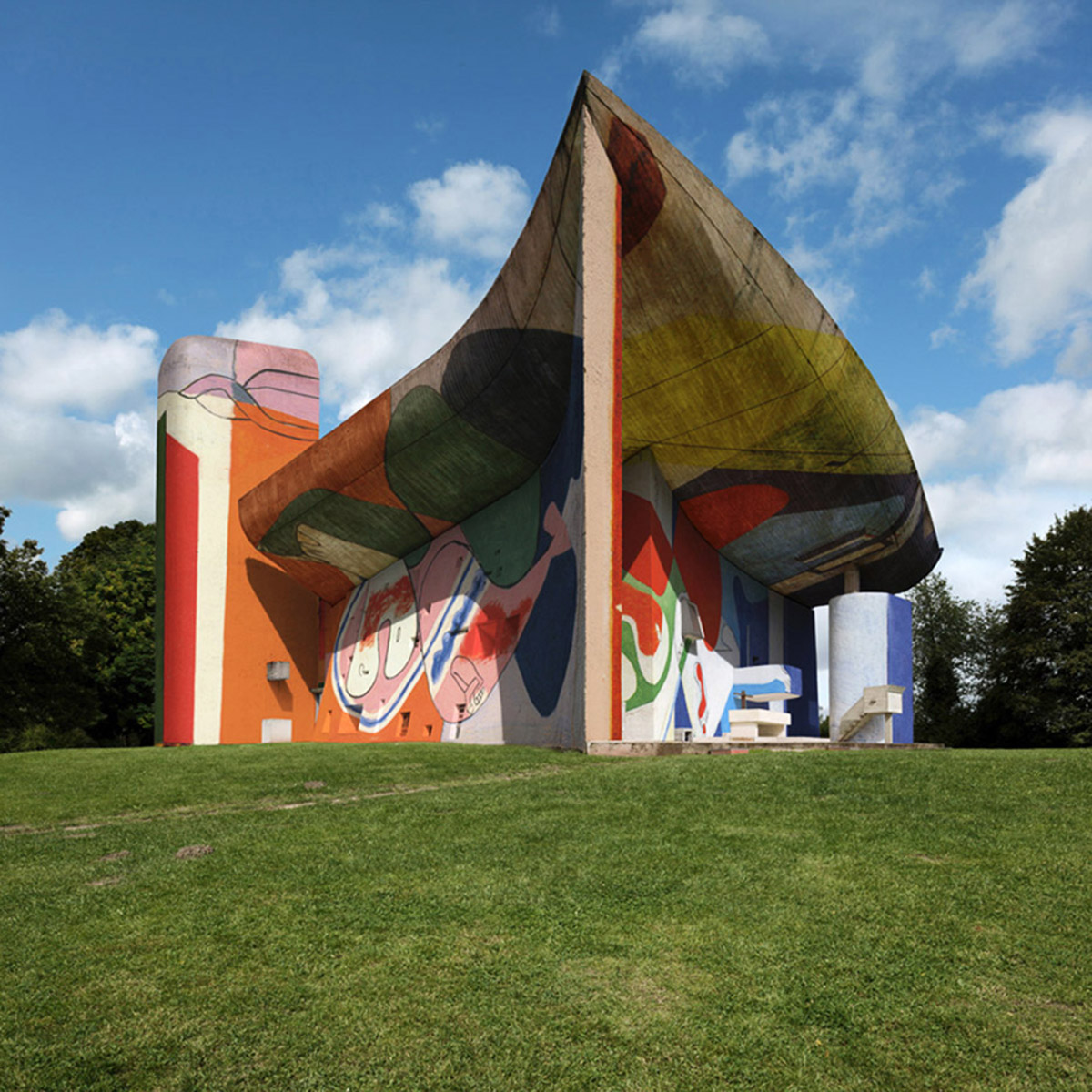
Belgium-based conceptual photographer Xavier Delory reimages Le Corbusier’s Ronchamp Chapel with graffiti, which is inspired by Le Corbusier's murals 'Spirales geometriques animees' and Spirales geometriques' realised at Eileen Gray's Villa E-1027. Delory's 5 series of images show an organic overlay of graffities, which are dominated by huge colourful shapes, mimics and geometrical patterns. In these images, each of the shapes is harmonized with the curvilinear forms of the building and structural massive curved roof that brings a new sculptural quality.

south view. image © Xavier Delory
The chapel Notre Dame du Haut, built by Le Corbusier between 1951 and 1955 on the hill Bourlémont, Ronchamp in France, was commissioned by the Dominican friars. Among them, was the father, Marie-Alain Couturier, who campaigned for the introduction of architecture and modern art in religious constructions.
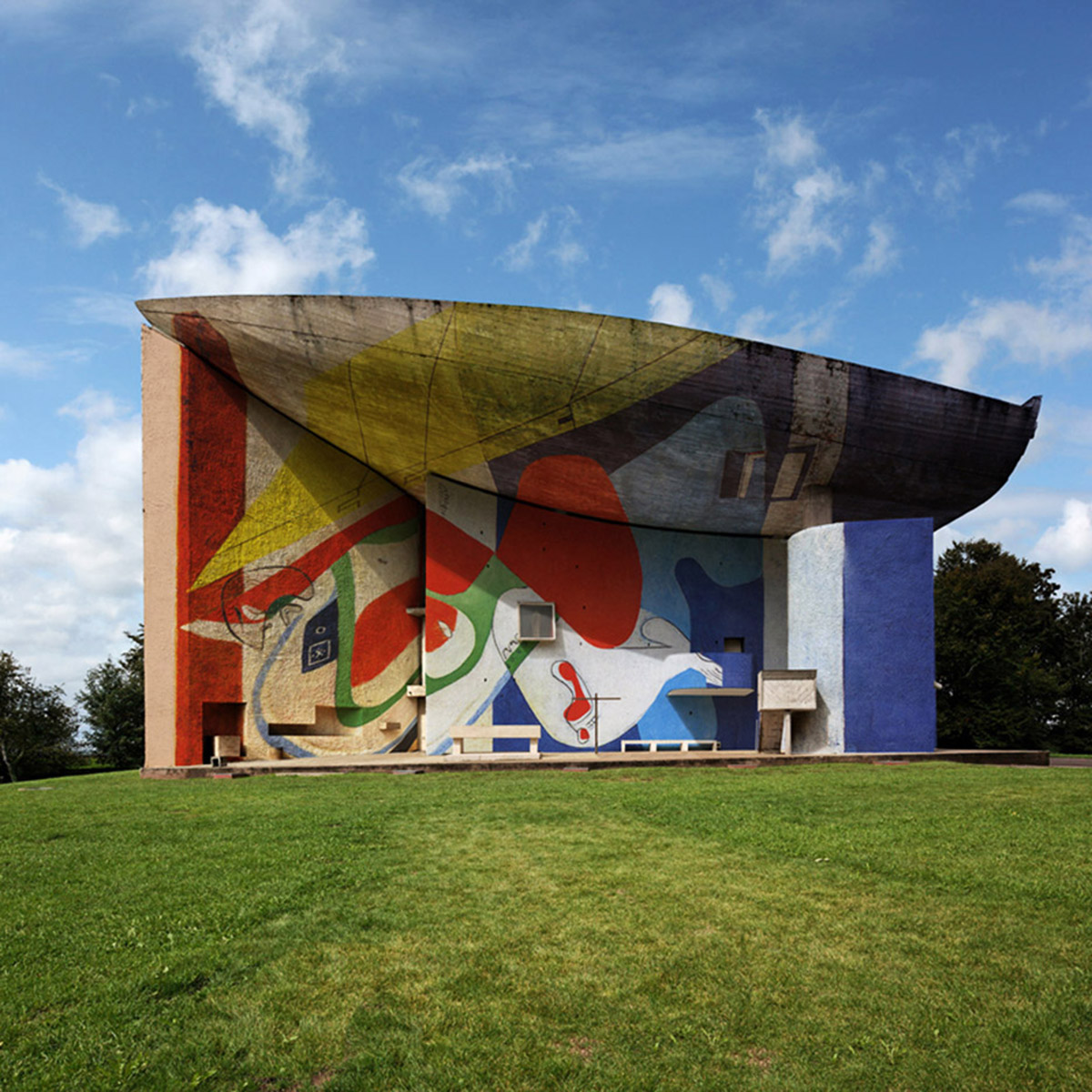
east view. image © Xavier Delory
''At the time, the chapel’s architecture surprised a great number of architects and architectural critics who saw Le Corbusier as one of the fathers of functionalism who swore allegiance only to the right angle. Its round shapes inspired by the Vosges hills (audio visual) and the animal world (crab shell for the roof), appeared to them to be a betrayal of the theories of modern architecture'' says Xavier Delory.
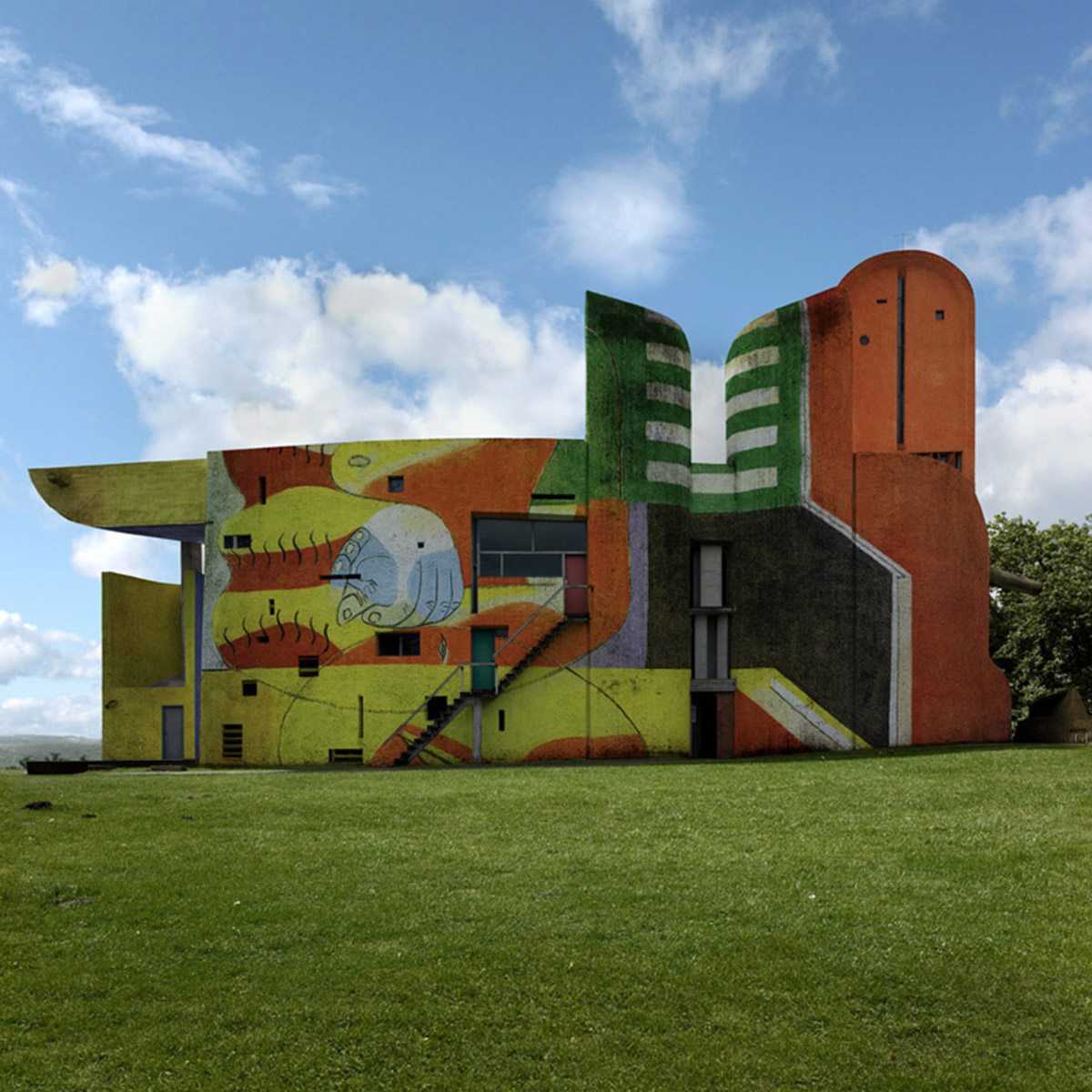
north view. image © Xavier Delory
''Le Corbusier was not only an architect, he was also a painter and sculptor. He is the author of the phrase "synthesis of the arts" meaning an alliance be-tween painting, sculpture and architec-ture. At first he thought about what painting and sculpture could bring to architecture, not playing a decora-tive role but rather "as a house guest" In a second phase, he moved this level of synthesis to a fusion of modern architectural styles at Ronchamp'' adds Delory.
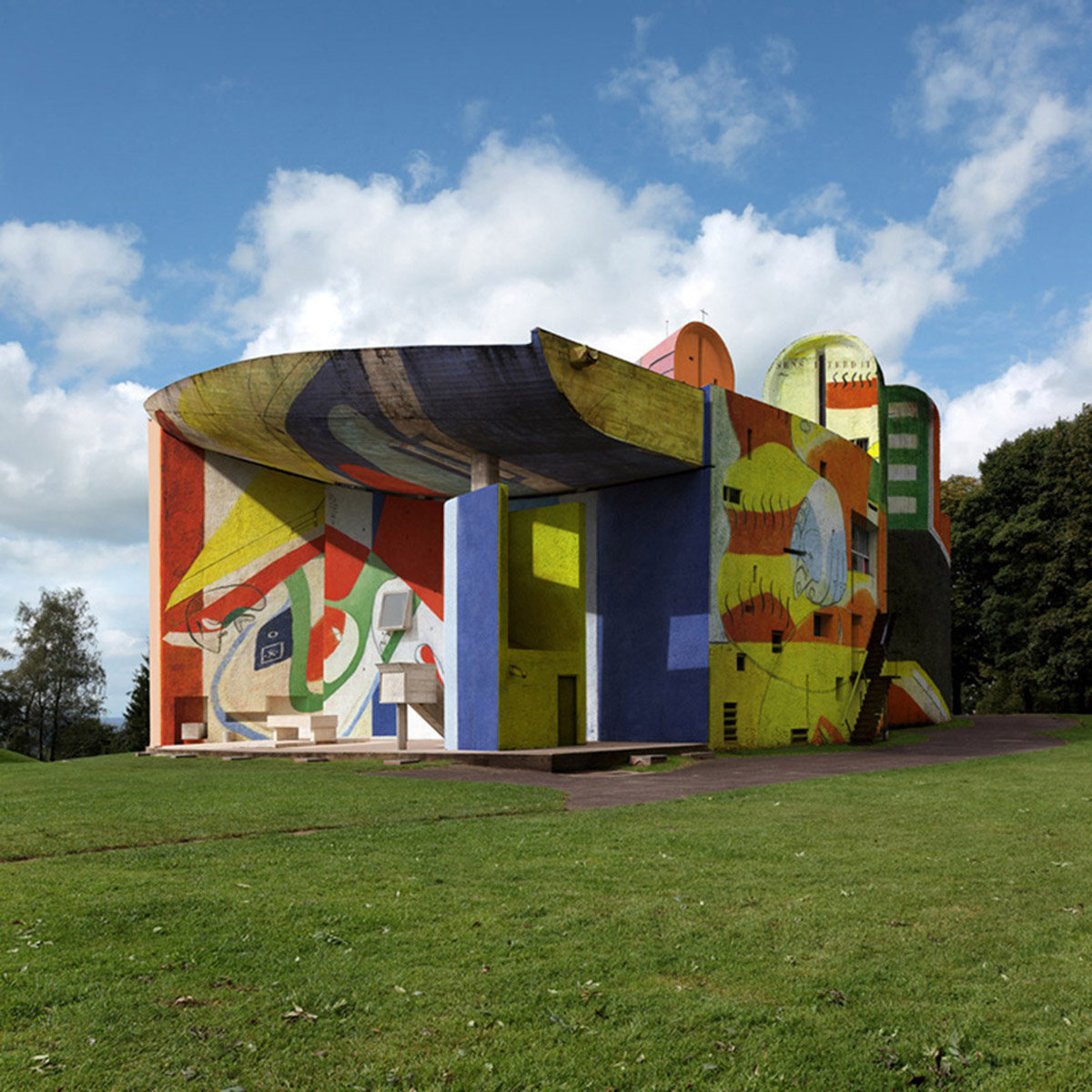
northeast view. image © Xavier Delory
Apart from that, ''this artistic adaptation should not be seen as vandalism as they are the real work of the architect himself'', according to Delory. The photographer transforms the masterpiece beyond its functional purpose or modernist building of the 20th Century. Titled as 'A Pilgrimage to Modernity', Delory revitalizes the monument as vibrant, dynamic and new 'art piece' combined with technology in the digital age. None of Delory's images are real even if they seem very real.

perspective view. image © Xavier Delory
Xavier Delory had previously painted Villa Savoye in France, the best known work of the French-Swiss architect, Le Corbusier, was built between 1928 and 1931. Villa purists say that this icon of the Modern Movement completes the cycle of white houses. These imageries become a new product of modernism in the 21st century and digital age-they are not only reminding a heritage of the architect but also transcends itself as synthesize of art and architecture- a new artistic reformation.
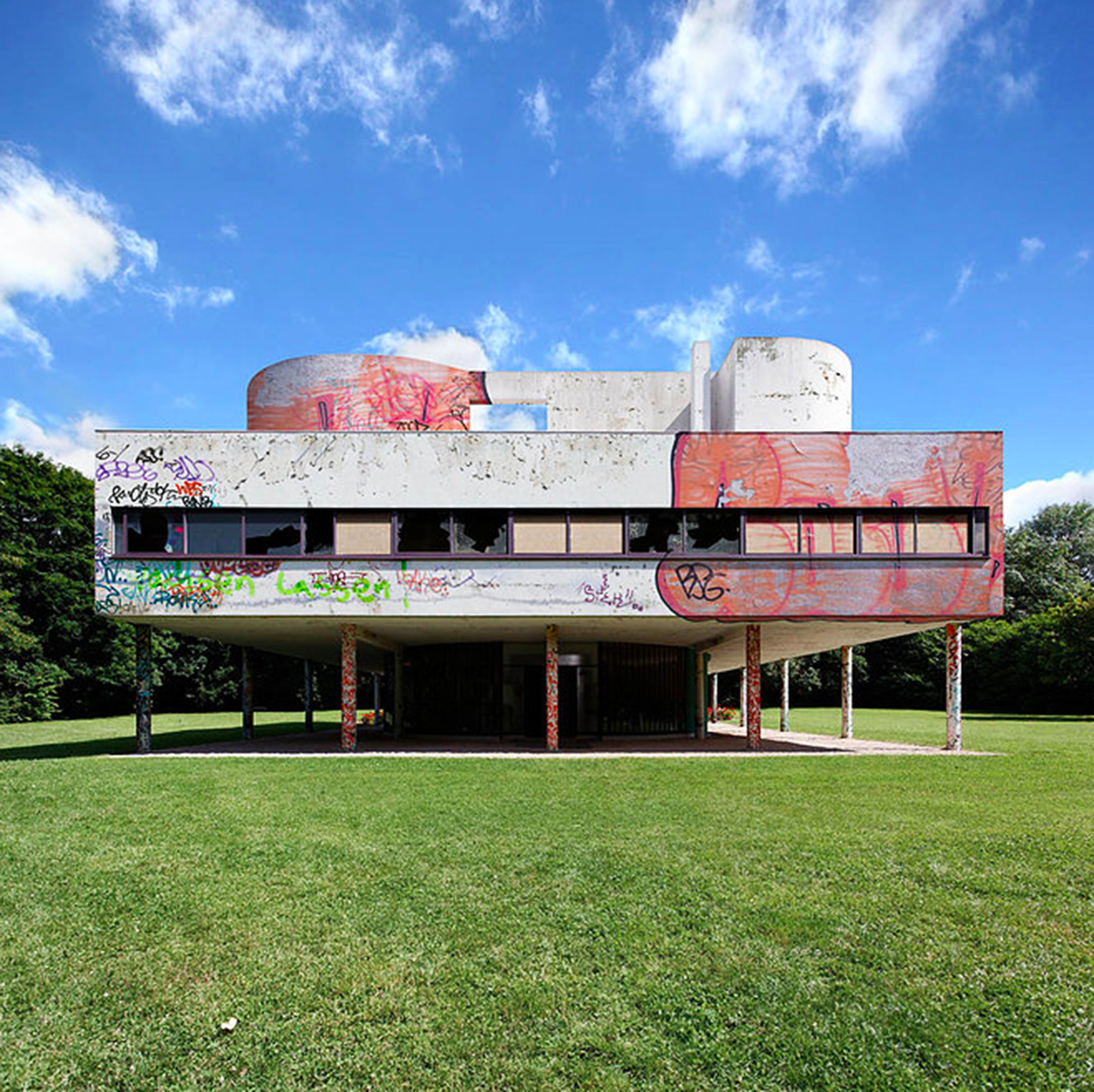
northwest view. image © Xavier Delory
"These 'museum buildings', preserved like precious objects, are the sole vestiges of all that remains of this movement," "Pilgrimage to Modernity is a quirky tribute to these 'monuments'' Delory added.
Top Image: southeast view. image © Xavier Delory
> via Xavier Delory
